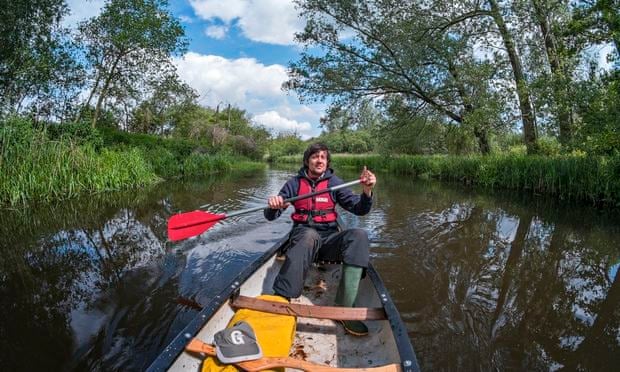Books about the natural world are now huge sellers, tapping into a new appreciation for the countryside and scepticism about material wealth

Bondage is so last year. Publishers who spent much of the past year in search of the next Fifty Shades of Grey are now seeking to exploit another literary phenomenon: the British public’s seemingly unfettered desire for nature writing.
In the past couple of years the genre has moved towards the publishing world’s centre ground thanks to several blockbuster books that have enjoyed critical and commercial success. Now it seems not a week goes by without another major new title hitting the shelves, backed by a major marketing campaign.
This month sees the publication of Rob Cowen’s Common Ground, described as a “portrait of a piece of pylon-strung edge-land, an unclaimed tangle of meadow, wood and river”. Then comes Patrick Barkham’s Coastlines, the third offering from the Guardian journalist seen as one of the genre’s emerging young stars. Also out now is Simon Armitage’s Walking Way, in which the poet explores the coastal fringes of south-west England.
Their publishers must be hoping that such titles will appeal to readers who lapped up Helen Macdonald’s H is for Hawk, which has sold more than 135,000 copies in the UK alone, won the Costa Book of the Year and the Samuel Johnson prize and has turned the Cambridge academic into a literary sensation.
More
In the past couple of years the genre has moved towards the publishing world’s centre ground thanks to several blockbuster books that have enjoyed critical and commercial success. Now it seems not a week goes by without another major new title hitting the shelves, backed by a major marketing campaign.
This month sees the publication of Rob Cowen’s Common Ground, described as a “portrait of a piece of pylon-strung edge-land, an unclaimed tangle of meadow, wood and river”. Then comes Patrick Barkham’s Coastlines, the third offering from the Guardian journalist seen as one of the genre’s emerging young stars. Also out now is Simon Armitage’s Walking Way, in which the poet explores the coastal fringes of south-west England.
Their publishers must be hoping that such titles will appeal to readers who lapped up Helen Macdonald’s H is for Hawk, which has sold more than 135,000 copies in the UK alone, won the Costa Book of the Year and the Samuel Johnson prize and has turned the Cambridge academic into a literary sensation.
More
No comments:
Post a Comment